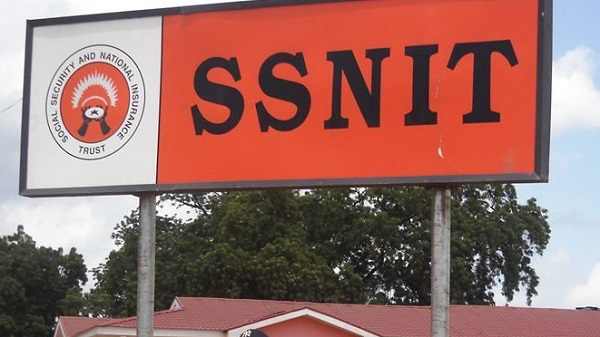The Social Security and National Insurance Trusts (SSNIT) says the study by the International Labour Organisation (ILO) projecting a complete depletion of SSNIT’s reserve by 2036 is only a prediction.
According to the SSNIT’s Chief Actuary Joseph Poku, the study, done every three years as required by law, gives an overview of the scheme’s status, assets and liabilities.
Additionally, it provides the management with ideas on measures to take to ensure the sustainability of the scheme, he said at a press conference on Monday.
Mr Poku recounted several cases where similar projections were made, including a 2011 report that predicted SSNIT would be unable to pay funds by 2019.
“The recommendations are not going to happen at all costs, that’s not what it is. So it gives you an idea that based on these assumptions, it’s likely to happen but there is no certainty. So, in 2011, it was projected that the scheme reserved will run or will be depleted.”
“The report (2011) says, among other things, that if contribution rates were not increased in the future, the annual expenditure on benefits and registration would exceed income from contributions and the funds from 2019 would just tank,” he said.
“What it said was that by 2019, we’re not going to have enough money to pay benefits. We are in 2024 and we have never defaulted in payments or benefits from 2019 up to date. So in this report, it’s not different from the reports that we’ve obtained over the years. Like I said, it gives you an idea of where you are going as a scheme, and then you take proactive measures to steer off, if there is any danger ahead of you,” Mr Poku explained.
This comes after the International Labour Organisation (ILO) projected a complete depletion of SSNIT’s reserve by 2036 in an actuarial valuation study of the Social Security and National Insurance Trusts (SSNIT) viability.
According to ILO, total income including contributions, investment income and other income, will no longer be sufficient to pay for annual expenditures including benefit payments to pensioners by 2029.
“Starting in 2029, total income (contributions, investment income and other income) is no longer sufficient to pay for annual expenditures. The reserve starts to decrease. During the year 2036, the reserve drops to zero” the research emphasised.
SSNIT having no other means of payment will depend on the reserves it has to meet the payment demand leading to the start of the depletion process.
This is likely to continue till 2036 when the reserve will drop to zero as stated by the valuation report.
However, Mr Poku defending SSNIT’s sustainability said that there was no need for fear.
But, he noted that the reports over the years have consistently hammered the need to increase the contribution rates.
“Ladies and gentlemen, it doesn’t count easy to increase contribution rates. It means the law has to be changed, we need to engage stakeholders, we have the employers, we have the workers as a group, we have our regulator, and the living parliament and government. So it goes through a process, and that process is a bit long,” Mr Poku said.
Meanwhile, in an earlier press statement, SSNIT assured Ghanaians that the scheme is not funded by reserves adding that they have enough funds to pay benefits due members.
“There has been steady growth in contributions. This growth is well supported by the current demographics and the dedicated activities of our staff in getting new employers and contributors to join the scheme.”
“Investment income has been healthy and would offset any unexpected deficit that may arise…The Trust has never missed any pension payment since 1991, when the pension scheme was introduced.”
SSNIT said the Government of Ghana continued to pay contributions on behalf of its workers, and that “modalities are in place to service the outstanding contributions”.
The Management reassured the public that it would “continue to ensure prudent management of the Fund to meet its benefits payment obligations beyond 2036.”



